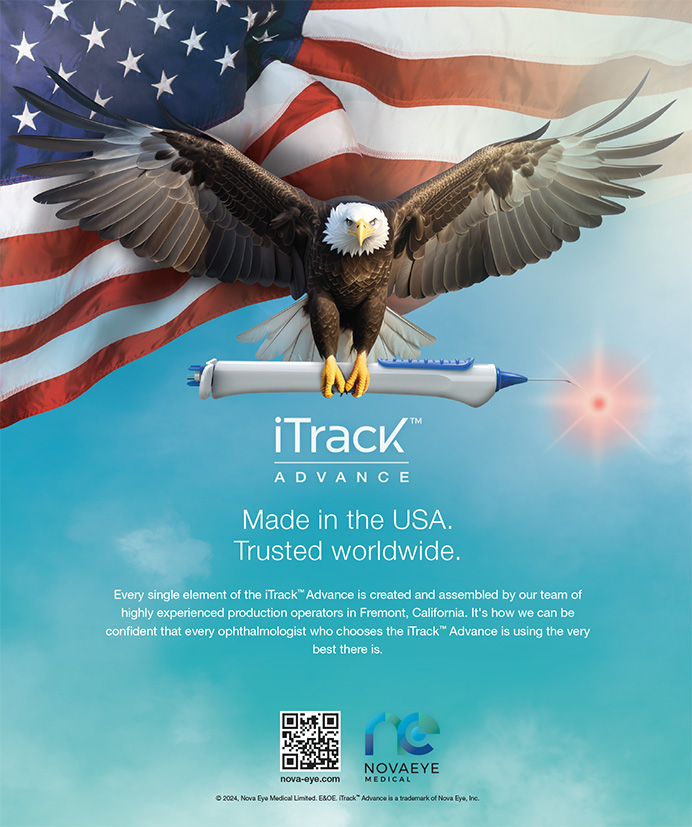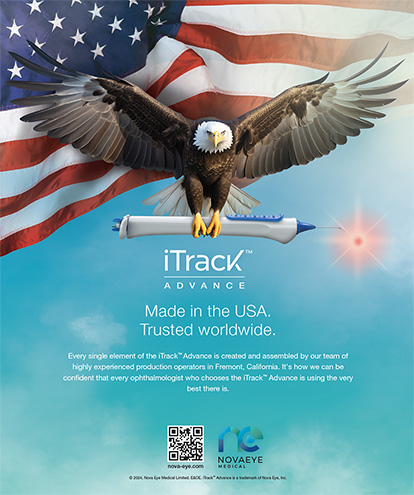
Refractive surgery has been characterized by a few highly successful procedures that have captured the market while driving their own initial growth through word of mouth from enthusiastic patients. For example, radial keratotomy and LASIK were viewed as extremely valuable by patients, whose perspective was key to the procedures’ success. In light of the currently depressed refractive surgery volume, it is important for ophthalmologists to pick the next winners in this category. Will one be small-incision lenticule extraction (SMILE)?
AT A GLANCE
• In the United States, small-incision lenticule extraction (SMILE) is approved for the correction of myopia and became commercially available on March 1.
• The invariable comparison is between SMILE and LASIK. The smaller incision of SMILE may offer advantages, although early UCVA may not be as good as with LASIK.
• If SMILE attracts patients who are fearful of LASIK, the former could be a winner for refractive surgeons.
Outside the United States, where SMILE is approved in virtually all markets, close to 750,000 procedures have been performed. Interestingly, SMILE volume has proven to be more stable than LASIK numbers in countries where refractive surgery volume is down because of adverse press. In the United States, SMILE is approved for the correction of myopia and became commercially available on March 1. Carl Zeiss Meditec is studying the procedure for the treatment of myopia with astigmatism.
WHAT ARE THE RESULTS WITH SMILE?
The US clinical trial was conducted across five study sites, with 336 eyes treated (unilaterally) and monitored for 12 months. The research objective was to evaluate the safety and effectiveness of the procedure for the reduction or elimination of -1.00 to -10.00 D of myopia with up to 0.50 D of astigmatism, but cylinder was not treated as a part of the clinical trial.
By 6 months, 99.7% of eyes had a UCVA of at least 20/40, with 88% of eyes achieving a UCVA of 20/20 or better. In terms of the predictability of the achieved versus the intended manifest refraction spherical equivalent, more than 98% of eyes had a result within ±1.00 D of the attempted correction at all study visits. The proportion of eyes within ±0.50 D of the attempted correction was 93% at 6 months and 94% at 12 months.1
I am particularly impressed with the consistency of the procedure’s predictability. There is no divergence in the upper ranges of myopia like one would see with LASIK or PRK. The numbers track more like those for an IOL, because SMILE is not “dose dependent”: the same amount of surgery and healing is involved for a -3.00 D treatment as for a -10.00 D correction.
The trial also demonstrated excellent safety with the procedure. No study eye had a BSCVA of less than 20/40 beyond week 1 or experienced more than a 2.00 D increase in astigmatism at any visit. There were no serious adverse events over the course of the study. At 12 months, 98% of eyes demonstrated no loss of BSCVA, and 26% showed gains in BSCVA.
IS SMILE BETTER THAN LASIK?
The invariable comparison is between SMILE and LASIK. In the largest published assessment (a review of 56 publications), Moshirfar and colleagues reported, “Small-incision lenticule extraction has shown efficacy, predictability, and safety that are proportionate to those of laser in situ keratomileusis (LASIK), with the additional benefit that it eliminates flap creation and the attendant risks. The potential advantages of the procedure related to improved biomechanical stability, postoperative inflammation, and dry eye symptoms have not been fully established. Small-incision lenticule extraction-treated eyes have shown a reduced degree of postoperative corneal denervation and higher-order aberrations and an accelerated rate of corneal nerve convalescence relative to LASIK.”2
Dan Z. Reinstein, MD, presents a SMILE technique for separating and extracting the lenticule with a single instrument.
Renato Ambrósio Jr, MD, PhD, provides an overview of the evolution, benefits, and limitations of SMILE and offers ideas for future improvements.
The smaller incision of SMILE may offer advantages. For example, the procedure may provide better stability and even produce less dry eye disease than LASIK.3
WHAT ABOUT THE LEARNING CURVE?
LASIK was initially viewed as a surgically intimidating procedure that was only for corneal specialists, but courses successfully trained thousands of surgeons to perform LASIK. I predict that it will be the same with SMILE. The surgery is different from LASIK, and different visualization skills and experience are needed. The average refractive surgeon, however, will enjoy executing the technique.
WILL SMILE REPLACE LASIK?
LASIK was never proven to deliver better results than PRK, but the former produced those results more quickly and with less discomfort.4 Patients chose LASIK and actively sought it out. It was they who drove the procedure’s growth over PRK.

LISTEN UP
John Doane, MD, and Gary Wörtz, MD, discuss SMILE’s safety and efficacy, how the procedure compares to LASIK, and how to achieve the best outcomes. bit.ly/3Slade0317
Check out BMC’s new Informed Consent podcast with Marguerite McDonald, MD, and Ranna Jaraha. In this episode, surgeons share how they present LASIK and SMILE to patients in order to obtain their informed consent. bit.ly/3slade0317
In that vein, patients have come to prefer and expect small-incision surgery, and SMILE involves one laser, no flap, and a much smaller incision than LASIK. There is a “wow factor” and less discomfort with SMILE compared with LASIK but perhaps not quite as good early UCVA.
I hope refractive surgeons will have as many tools available as possible. Many attempts to rebrand LASIK and PRK and to sidestep their complications and limitations have failed. These rebranded procedures are not fundamentally different from LASIK, however, whereas SMILE is. Even if SMILE is only “as good as” LASIK, will the former win over patients who have fear or confusion about PRK and LASIK? If so, SMILE could be a new beginning for many refractive surgeons.
1. Carl Zeiss Meditec. VisuMax Femtosecond Laser. Small incision lenticule extraction (SMILE) procedure for the correction of myopia. Professional use information. http://www.accessdata.fda.gov/cdrh_docs/pdf15/P150040D.pdf. Accessed February 22, 2017.
2. Moshirfar M, McCaughey MV, Reinstein DZ, et al. Small-incision lenticule extraction. J Cataract Refract Surg. 2015;41(3):652-665.
3. Denoyer A, Landman E, Trinh L, et al. Dry eye disease after refractive surgery: comparative outcomes of small incision lenticule extraction versus LASIK. Ophthalmology. 2015;122(4):669-676.
4. Durrie DS, Slade SG, Marshall J. Wavefront-guided excimer laser ablation using photorefractive keratectomy and sub-Bowman’s keratomileusis: a contralateral eye study. J Refract Surg. 2008; 24(1):S77-84.




